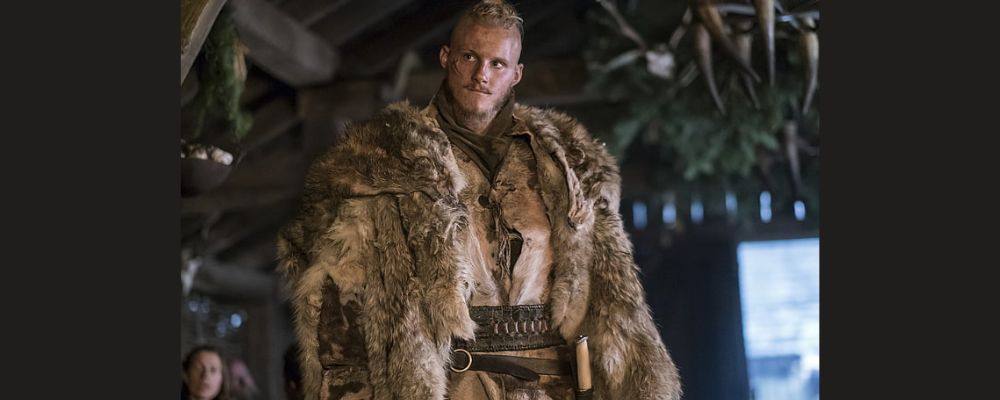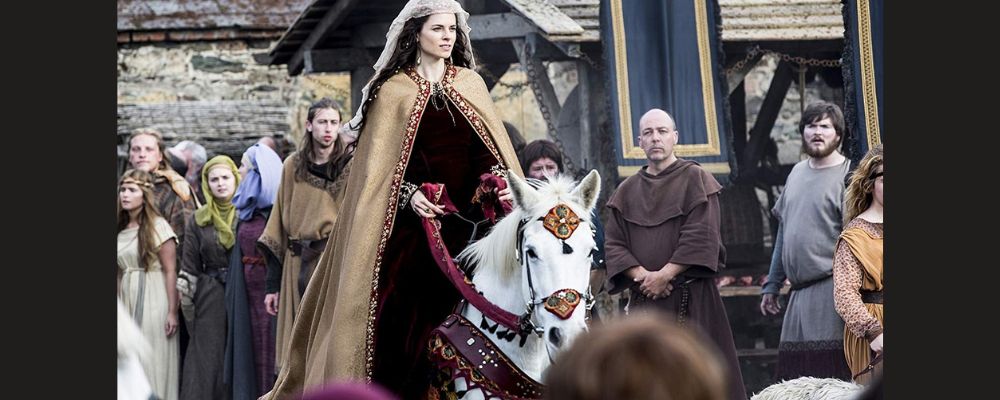
The Vikings are renowned for their daring voyages, fierce raids, and rich mythology. Yet, beneath the helmeted warriors and their tales of valor lies another facet of Viking civilization that is equally fascinating their trade networks.
Viking trade routes, which extended across Europe, Asia, and even into North America, were instrumental in shaping the Viking Age.
This article delves into the world of Viking trade and the goods and services considered valuable by the Vikings and their trading partners.
Viking Trade Routes
The Viking Age, which spanned from the late 8th century to the early 11th century, saw the Vikings emerge as formidable traders. Their prowess at sea, innovative ship designs, and navigational skills allowed them to access trade routes and establish connections that were previously untapped.
The Baltic Sea

The Baltic Sea was a vital hub for Viking trade. The Vikings’ proximity to this region gave them easy access to the amber-rich shores of the Baltic. Amber was highly prized and sought after across Europe for its use in jewelry and religious ceremonies.
Amber was so prized among the Vikings that it was sometimes called Norse Gold. According to legend, it was made by the tears of Freyja, which turned to gold when they touched land and to amber when they touched water.
Amber appears in archaeological finds from across Scandinavia, such as the amber bear and amber playing piece above, both found in Denmark.
The Volga River

To the east, the Vikings sailed down the Volga River, reaching as far as the Black Sea and Constantinople (modern-day Istanbul). Along this route, they engaged in a flourishing trade of furs, honey, wax, and slaves in exchange for spices, silks, and precious metals from the Byzantine Empire.
The discovery of Arab silver coins in Viking hoards, like the Cuerdale Hoard in England, provides concrete evidence of their trade connections with the East. The Vikings, especially in Sweden, even wore Arab coins, like the one above, as amulets and brooches.
The Atlantic Ocean

The North Atlantic was another key Viking trade route. Vikings explored and settled in distant lands such as Iceland, Greenland, and even Vinland, now known as North America.
At L’Anse aux Meadows in Newfoundland, Canada, archaeological excavations have uncovered evidence of Viking presence, including iron nails and a spindle whorl.
These findings suggest that the Vikings may have engaged in trade, possibly in furs or other commodities, with indigenous peoples in North America.
You can read more about the Vikings in the North Atlantic here.
The Silk Road

The Vikings were not just confined to European waters. They ventured along the Silk Road, linking the East with the West.
Excavations at sites like Birka in Sweden have yielded Islamic silver coins, Chinese silk, and other exotic goods, highlighting their involvement in long-distance trade networks.
Silk has been found in abundance in Viking Graves at Oseberg, Birka, and Haithabu. The precious fabric was usually cut into stripes and used as borders on jackets, caftans, and dresses. In Oseberg, silk from more than 15 different textiles has been identified.
To this should be added silk used locally for tablet-woven bands and embroidery. Some of this is depicted above.
You can read more about Viking fashion and clothing styles here.
Goods Traded by the Vikings
What goods were most commonly exchanged along Viking trade routes? Foodstuffs, especially grains, would have been among the goods most often imported by the Vikings due to relatively challenging agricultural conditions in Scandinavia. But what else?
Amber

Amber was a highly coveted commodity in Viking trade. Its golden glow was used to craft intricate jewelry and religious artifacts. Amber has been discovered in numerous Viking graves and hoards, exemplifying its importance in their society.
For instance, the Gokstad ship burial in Norway contained a wealth of amber objects, including beads and amulets.
The amber Mjolnir pendant above was found in Sweden. Thor’s hammer pendants were one of the most common pieces of jewelry in the Viking age and were a symbol of protection. This is one of a few surviving amber examples.
Furs, Honey, and Wax

The northern climates of Scandinavia offered an abundance of furs, including those of bears, wolves, and foxes.
Viking traders bartered these furs, along with honey and beeswax, with other regions. These items were essential for warmth and were also used in the production of candles.
Archaeological evidence from Viking graves showcases their use of furs in clothing and burial rituals.
Slaves

The trade of slaves was common in the ancient and medieval world, including among the Vikings. They were mostly prisoners of war or individual captives during raids.
There were different categories of slaves within Viking society. Thralls were the lowest class and were often forced to perform hard labor. They worked on farms, in households, or as manual laborers. Higher-ranking slaves, known as “houscarls,” served as bodyguards or personal attendants to Viking chieftains or nobility. These individuals had more privileged positions compared to thralls.
Their work was valuable and could be traded in distant lands, particularly in the Islamic world and the Byzantine Empire.
Runestones and sagas recount the acquisition and sale of slaves, shedding light on this grim aspect of their trade.
Spices, Silk, and Precious Metals
The Vikings’ trade with the Byzantine Empire and the East introduced them to exotic spices, silk fabrics, and precious metals like silver and gold.
The archaeological record, including the Hiddensee Hoard in Germany, contains Byzantine and Arab coins, as well as Eastern artifacts, reflecting the diversity of their trade goods.
Services Traded by the Vikings
Trade was not solely about the exchange of physical goods for the Vikings. They also provided valuable services, which contributed to their reputation as skilled traders.
Craftsmanship

Viking artisans were renowned for their craftsmanship. They created intricate jewelry, weapons, and ornate items that were highly sought after in other parts of the world.
Archaeological discoveries, like the silver hoard from York, England, depicted above, exemplify the quality of Viking metalwork and their ability to export their skills.
Mercenaries

Viking warriors were often hired as mercenaries by various rulers and kingdoms across Europe. Their ferocity in battle and combat expertise made them valuable assets in conflicts.
Runestones and sagas have recorded instances of Viking mercenaries serving in foreign armies.
This is a situation that was reflected in an episode of Vikings, in which Ragnar and his men fight as mercenaries to help Ecbert take control of Mercia.
Perhaps the most well-documented historical example of Vikings serving as mercenaries is their enlistment in the Varangian Guard, the elite bodyguard unit of the Byzantine Emperors. Viking warriors, often referred to as Varangians, served in this prestigious guard from the 10th to the 14th century. They played a crucial role in protecting the Byzantine Empire and were known for their loyalty and fierce combat skills.
Vikings also ventured to the Iberian Peninsula to serve as mercenaries during the Reconquista, the Christian campaign to recapture Spain from the Moors. Viking warriors were valued for their combat abilities, and they joined various Christian armies in battles against the Moors.
Vikings, particularly from the Danish and Norwegian regions, were hired as mercenaries by various Italian city-states in the 11th century. They fought in the Sicilian campaigns, which were part of the larger struggle for control over southern Italy and Sicily. The Vikings were often employed for their naval expertise in these conflicts.
The Viking Trade Empire
The Viking Age was a remarkable period of exploration and trade that left a lasting impact on the world. Through their ingenious navigation, adaptable ships, and tenacious spirit, the Vikings established trade routes that spanned continents.
The archaeological evidence, from amber treasures in ship burials to the remnants of trade goods in hoards, illuminates the dynamic nature of Viking trade. It was not merely about the exchange of goods but also the sharing of cultures, craftsmanship, and services that contributed to the rich tapestry of the Viking Age.







